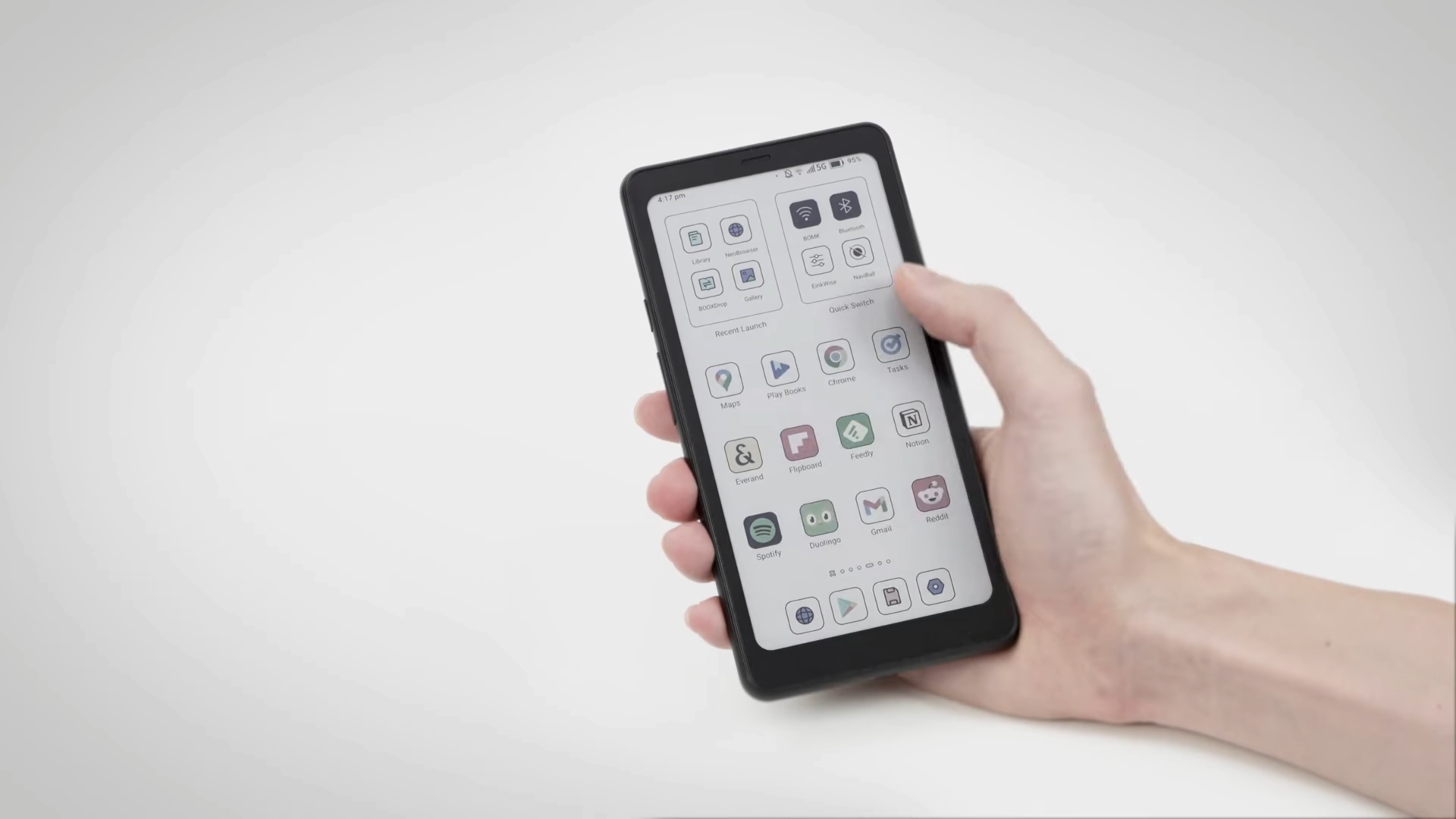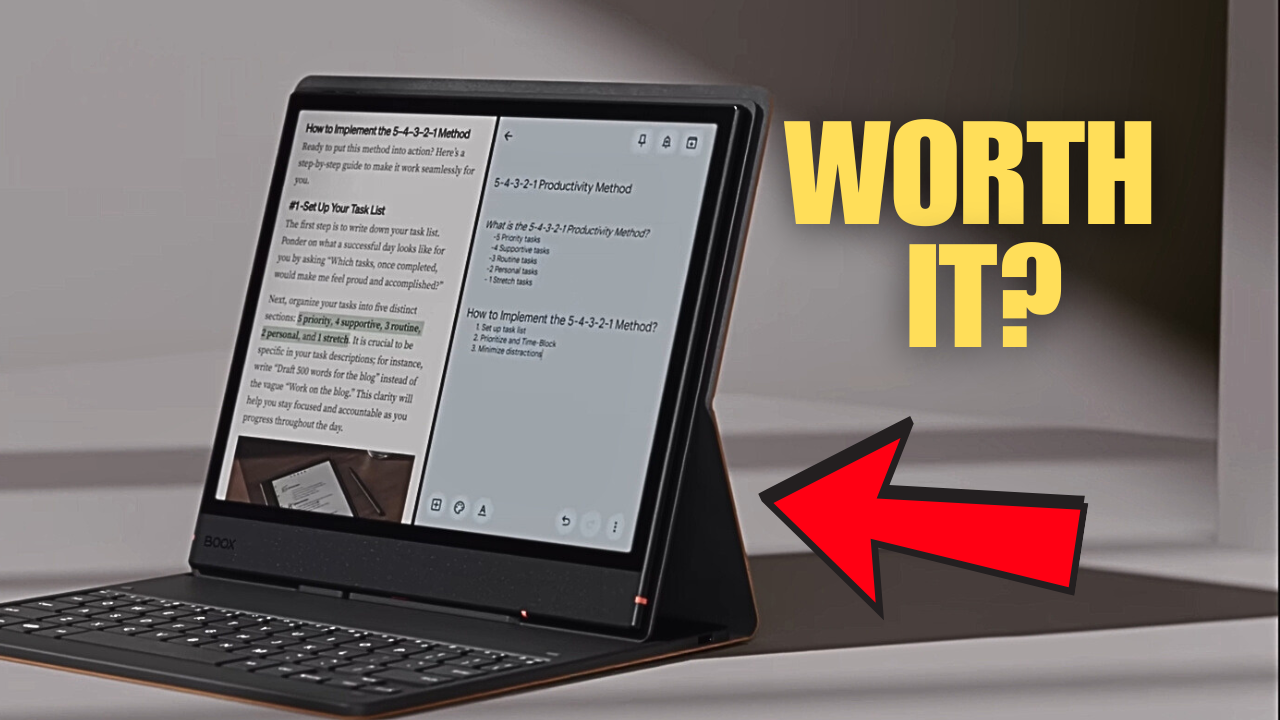Boox has recently released their new Palma 2 Pro, a surprising little device, blending an e-reader and a smartphone. This gadget successfully target the idea of a digital detox, giving users the full power of Android apps on an E Ink, eye-friendly screen.
The “Pro” version carries a price tag of $400, representing a huge jump from the previous model. We thinks the significant price increase is justified, however, because three major upgrades fundamentally change the device’s capability and user experience.
Upgrades
The Palma 2 Pro packs crucial improvements that boost its capability and experience, making it a powerful contender in the pocket e-reader market:
It now uses the advanced E Ink Kaleido 3 color display, which brings color to the E Ink experience, making documents and charts pop. While pure text remains a crisp 300 PPI, the color resolution drops significantly to 150 PPI, meaning colors look softer and more desaturated than on a traditional smartphone.
Boox bumped the memory up to a massive 8GB of RAM, a substantial increase that future-proof the device and ensures smooth multitasking with demanding apps.
This feature changes everything, as it includes a hybrid SIM slot that give you access to data-only 5G cellular internet. This provides continuous, high-speed connection, finally realizing the full potential of a truly connected pocket-sized E Ink device.
Beyond these core improvements, the Palma 2 Pro runs on the modern Android 15 OS and support the InkSense Plus active stylus, sold separately. In many ways, this are not your old Palma.
Design, Performance, and Open OS
Boox designed the Palma 2 Pro for portability and daily use; it are very lightweight at 175 grams, easy to grip, and feel quite durable.
Physically, the device includes a USB-C port and surprisingly strong dual speakers for listening to audiobooks and podcasts, and it offers a water-repellent design. For security and speed, the power button conveniently doubles as a fingerprint sensor. You also get a 16-megapixel rear camera, which are not for social media but works perfectly for scanning documents.
The device retains the same undisclosed octa-core processor as the previous model, which perform reasonably well, but the huge boost to 8GB of RAM easily handles all those third-party apps, ensuring a smooth, lag-free experience. Since the Palma 2 Pro runs an open Android 15-based operating system, you has full access to the Google Play Store, meaning you can install almost any app you wants without being locked under any system.
The BOOX Super Refresh (BSR) Technology are the real performance magic, countering E Ink’s inherent slowness by letting you dynamically control the refresh speed. You can set a web browser app to Fast Mode for smooth scrolling and your favorite reading app to HD Mode for the best text clarity, which genuinely makes using regular Android apps possible.
Connectivity and Battery: The Connected E-Reader
The inclusion of data-only 5G connectivity via the hybrid SIM slot are crucial, enabling continuous internet access for syncing, streaming, and even using apps like WhatsApp or Signal. Just remember, it is not for text or traditional phone calls. It also supports A-GPS, so you can uses it for navigation and apps that need you to enable location services.
The device holds a large 3,950 mAh battery. While a Kindle might last for weeks, the Palma 2 Pro runs full Android and 5G, which drains power faster. If you uses it strictly for reading with Wi-Fi turned off, it will last you well over a week; however, if you uses it like a connected smartphone—with 5G on and apps running—your battery life drops to about two days.
Final Word
The BOOX Palma 2 Pro will surely be a success. At $400, it perfectly targets individuals who wants the unmatched eye-comfort of E Ink combined with the full functional power of the open Android ecosystem. Someone who needs continuous, high-speed cellular data connectivity for work, travel, or productivity will find this device deliver the most powerful, connected, pocket E Ink experience on the market, finally realizing the hybrid E Ink phone concept’s full potential.
Do you think this device justifies the $400 price, or would you stick with a traditional e-reader?





